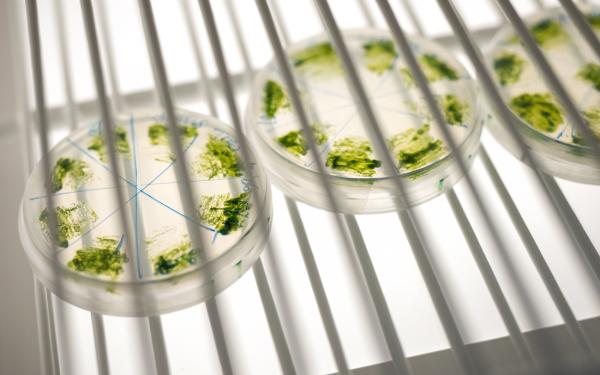Artificial photosynthesis: The decisive step forward
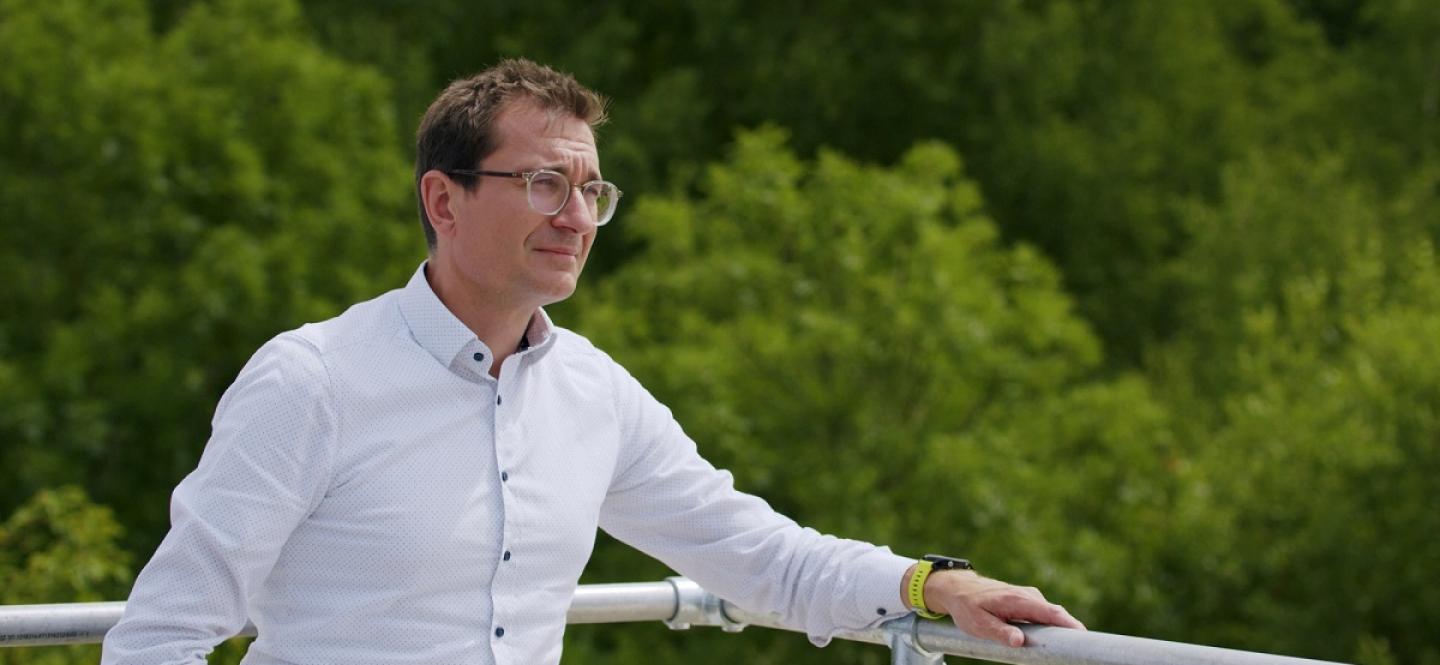
Element K für VolkswagenStiftung
Tobias Erb of the Max Panck Institute for Terrestrial Microbiology has reinvented photosynthesis – in the laboratory. His goal is to produce chemical substances with the help of sunlight and carbon dioxide in the air.
Photosynthesis is among the most fascinating biological processes. Green plants and many species of bacteria harvest solar energy to convert carbon dioxide from the air into energy-rich compounds. Not only plants live from this vital biological mechanism: it is also essential for the existence of all higher organisms, animals and humans. But photosynthetic carbon fixation, which has been around for billions of years, is not particularly efficient. The most important molecule in photosynthesis, the enzyme Rubisco, which fixes carbon dioxide (CO2) from the atmosphere, works quite slowly – and is subject to certain flaws.
About five years ago, microbiologist Tobias Erb from the Max Planck Institute for Terrestrial Microbiology in Marburg therefore came up with the idea of kicking photosynthesis into high gear.
His plan: Instead of using Rubisco, he wanted to bind carbon dioxide with the enzyme enoyl-CoA carboxylase/reductase (ECR), which is found in purple bacteria that live in the muddy bottom of lakes. ECR is about twenty times faster than Rubisco and works almost flawlessly. The challenge: Natural photosynthesis is a molecular chain reaction involving many other enzymes besides Rubisco – and they don't work with ECR. For ECR photosynthesis, Tobias Erb therefore had to build a completely new enzyme chain. Three years ago, his team reached its goal: The chain worked. The ECR absorbed CO2. The other enzymes converted it into larger molecules.
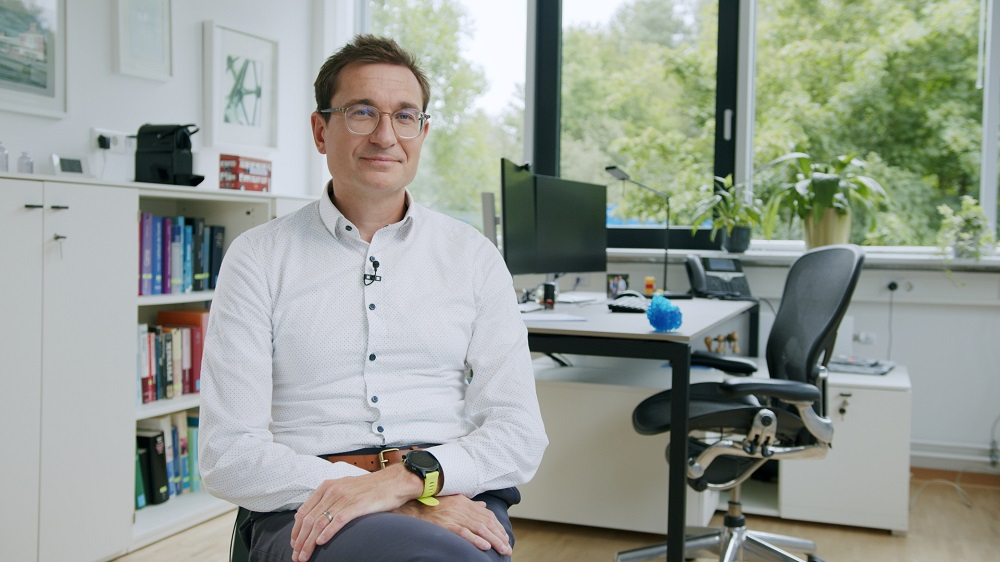
Prof. Dr. Tobias Erb wants to give photosynthesis a leg-up.
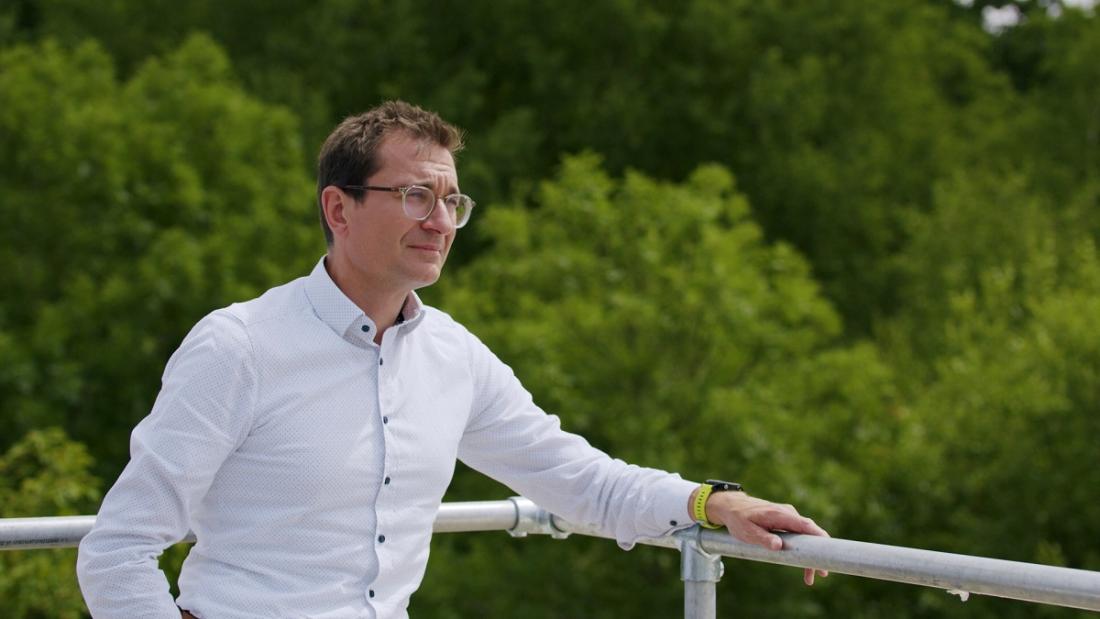
Element K für VolkswagenStiftung
Learn more about Tobias Erb and his work in our videoportrait.
Breakthrough thanks to Escherichia coli
Now Tobias Erb and his research group have taken another decisive step forward. They have succeeded in transferring artificial photosynthesis from the lab jar into a living cell – into the bacterium Escherichia coli, E. coli. "This is the breakthrough for us," says Tobias Erb. Escherichia coli is one of the most comprehensively researched microorganisms. Microbiological methods have long been used to insert genes into the genome of E. coli, enabling the bacterium to produce various substances on demand – such as insulin, for example.
Tobias Erb’s synthetic pathway for the fixation of carbon dioxide in vitro is as follows: He inserted the genes containing the blueprint for ECR and the other enzymes into the genome of E. coli. To prove that carbon dioxide can indeed be processed into larger molecules in an artificial photosynthetic chain, he and his team also incorporated enzymes that produce the molecule succinyl-CoA, which plays a major role in the construction of the cell wall and in the synthesis of important amino acids. It could be shown that the entire chain from CO2 uptake to succinyl-CoA actually works in E. coli. Tobias Erb has named his enzyme chain the CETCH cycle.
This is the breakthrough!
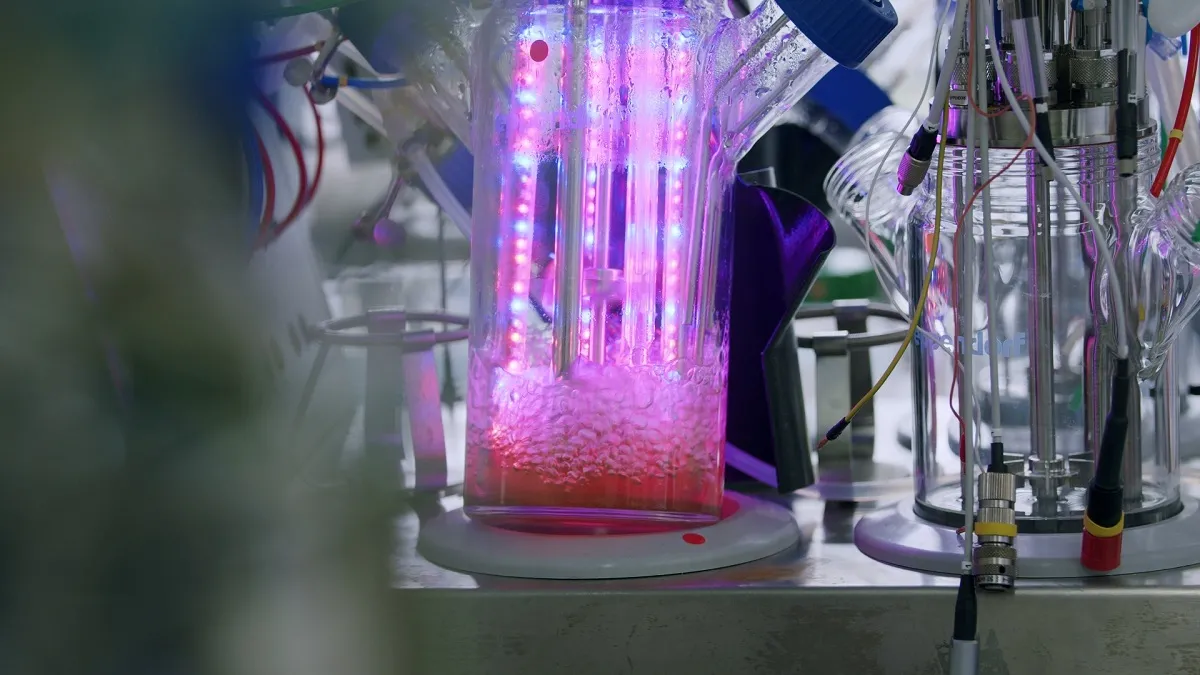
A photobioreactor with blue-green algae (cyanobacteria) provides ideal growth conditions. The light in the wavelengths relevant for photosynthesis appears red and blue to the human eye.
... E. coli had a few tricks up its sleeve to plug the gaps in its metabolism.
It is true that E. coli cannot obtain energy from sunlight and – unlike green plants – must be additionally supplied with carbohydrates. Nevertheless, proof has been provided that a complete artificial metabolic pathway for binding CO2 can be incorporated into a living organism.
Working on E. coli was a challenge, says Tobias Erb. After he had transferred the genes for the various enzymes of its CETCH cycle into the bacterium's genome, initially nothing happened. It turned out that the bacterium's metabolism partially bypassed the CETCH cycle, using these detours to produce the vital succinyl-CoA. In the next step, Tobias Erb and his colleagues therefore had to deactivate some of the bacterium's genes in order to force it to produce succinyl-CoA within the CETCH cycle. "This was quite complicated because E. coli had a few tricks up its sleeve to plug the gaps in its metabolism," says Tobias Erb. But then it worked: E. coli finally started producing succinyl-CoA via the CETCH cycle.
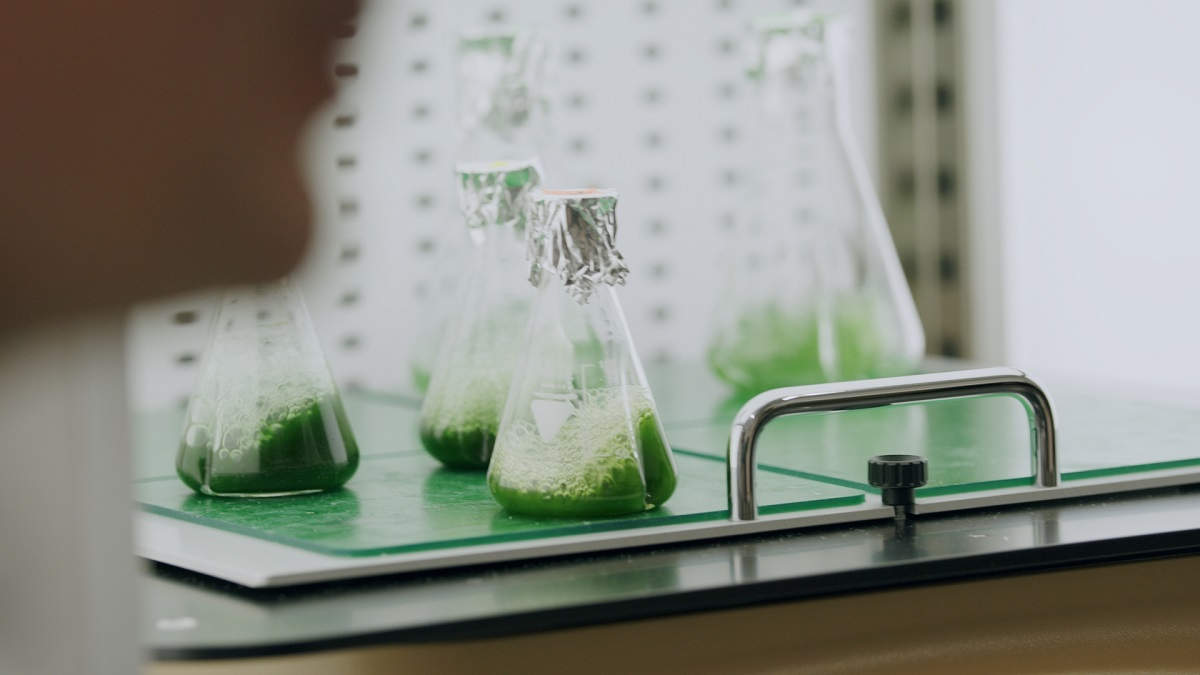
Tobias Erb and his team are investigating photosynthesis using, among others, blue-green algae (cyanobacteria) – shown here as a liquid culture.
Undeterred
Initially, though, it was not at all clear that E. coli could function the way Tobias Eb wanted, for he had already experienced difficulties working on it in the past. Originally, he had planned something different for his project, which was supported by the Volkswagen Foundation under its funding initiative "Life? - A Fresh Scientific Approach to the Basic Principles of Life". He actually wanted to transfer the CETCH cycle into a so-called minimal cell. This is a highly simplified cell that the J. Craig Venter Institute in Rockville, Maryland, had cultivated some time ago for biochemical research. Its genetic material and metabolism are reduced to such an extent that the cell is only able to survive and divide.
As it turned out, however, the minimal cell is inadequate for the CETCH cycle. The cell is not directly able to read off the information of all the inserted genes and subsequently build a complete CETCH cycle. "That's why we decided to switch to E. coli as an alternative – actually a much more complex organism whose metabolism initially caused us quite a few problems."
Tobias Erb has reached an important goal. Now, he is eager to see whether it will be possible in the coming months to actually transfer the CETCH cycle to the minimal cell after all – or, in the long term, even to transfer it into plant cells. "That would be great, because then we might be able to use it to synthesize many high-quality substances for the chemical industry with relatively little technical effort – simply with solar energy and carbon dioxide in the air."
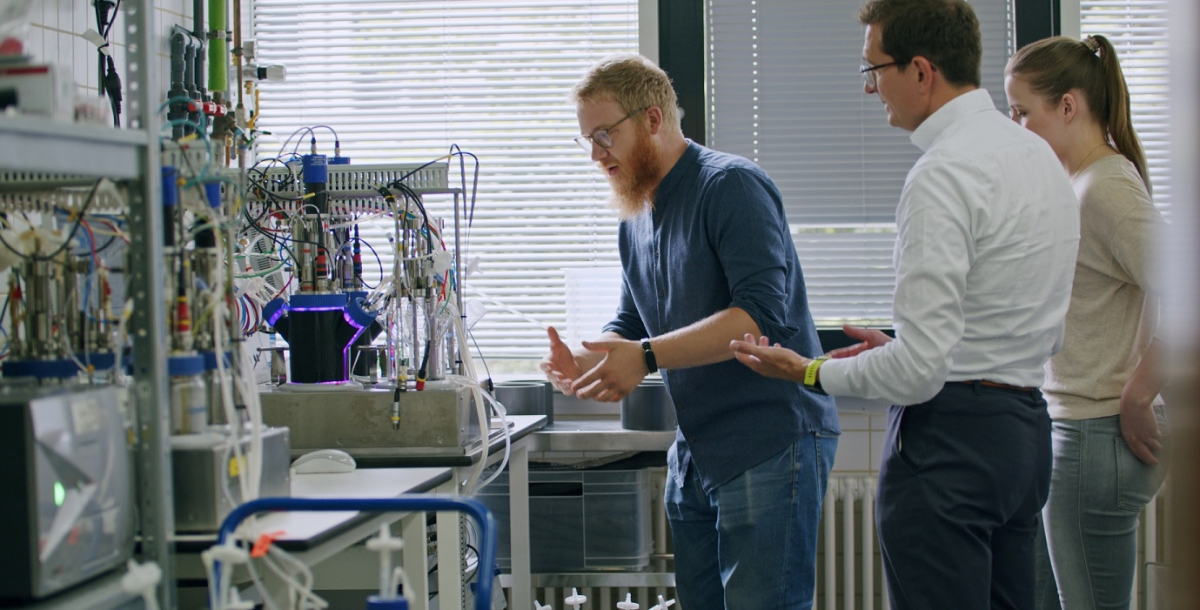
Tobias Erb and his Team want to transfer the CETCH cycle into a so-called minimal cell.

